Explorer
ISRO launches South Asia Satellite GSAT-9 from Andhra Pradesh's Sriharikota

Sriharikota (AP): India on Friday successfully launched G-SAT9 (South Asia Satellite) for SAARC nations excluding Pakistan. With the launch of Geosynchronous Satellite Launch Vehicle (GSLV-F09) carrying GSAT-9, India has achieved yet another milestone in the space technology. Giving a thrust to Modi's Space Diplomacy, India would gift its neighbours a special gift of "SAARC satellite". However, Pakistan had opted out of this project, hence the satellite was named as "South Asia Satellite" which was scheduled for today at 4:57 PM. GSLV-F09 mission is the eleventh flight of GSLV and its fourth consecutive flight with the indigenous Cryogenic Upper Stage (CUS). The 28 hours countdown of mission started on Thursday at 12:57 PM. GSAT-9 is a Geostationary Communication Satellite with the objective to provide various communication applications in Ku-band with coverage over South Asian countries. GSAT-9 is configured around the ISRO’s standard I-2K bus, with lift off mass of 2230 kg. The main structure of the satellite is cuboid in shape built around a central cylinder with a mission life of more than 12 years. GSLV-F09 was launched from the Second Launch Pad (SLP) at Satish Dhawan Space Centre SHAR (SDSC SHAR), Sriharikota. Prime Minister Narendra Modi in his Mann Ki Baat had said the satellite embodies the "spirit of Sabka Saath, Sabka Vikas". "The mission not confined to India alone but applies to the global context too and specially to our neighbouring countries" PM said. 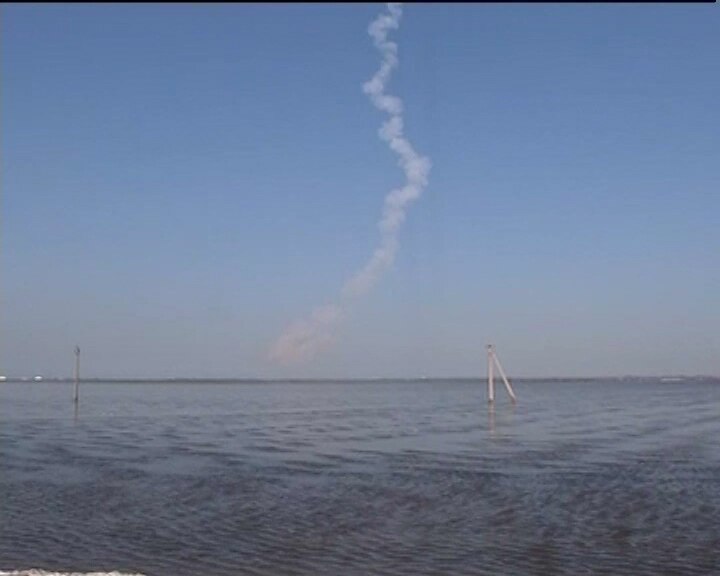
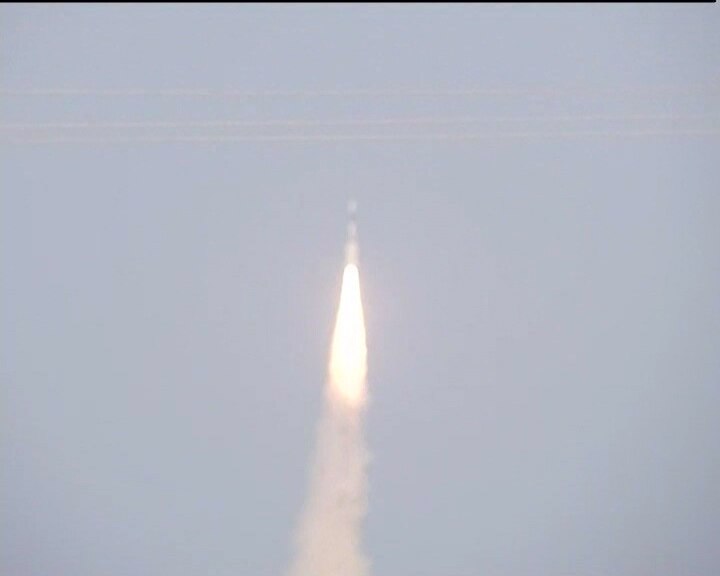
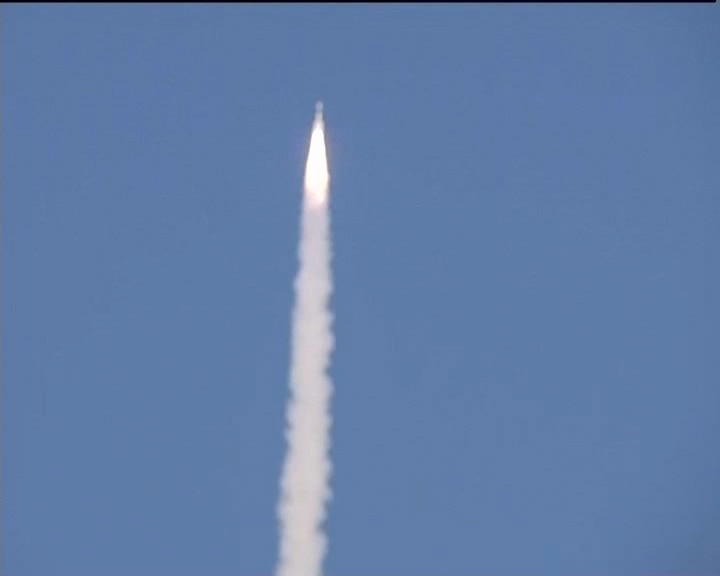 PM Narendra Modi today congratulated the ISRO team for its historic launch of South Asia Satellite.
PM Narendra Modi today congratulated the ISRO team for its historic launch of South Asia Satellite. 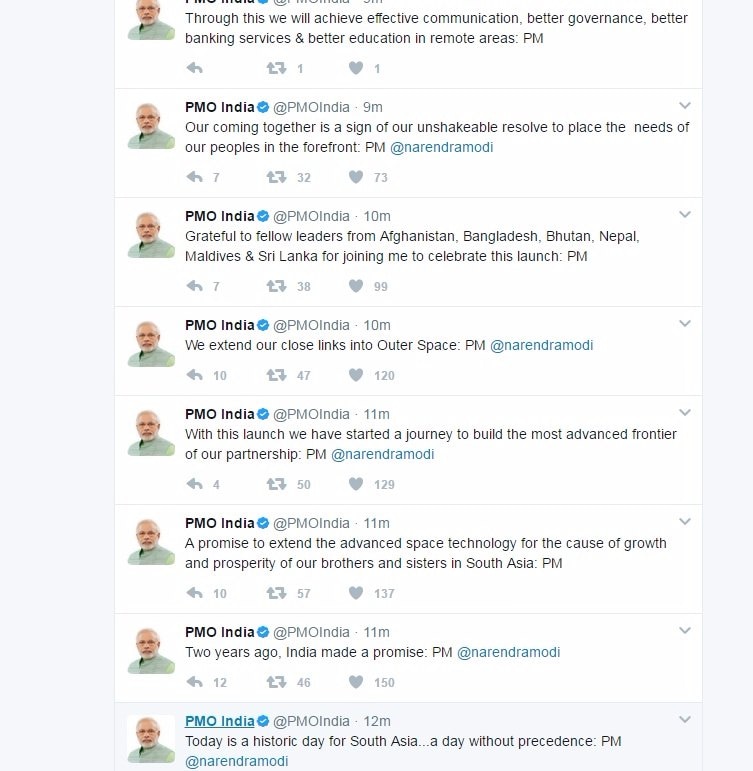
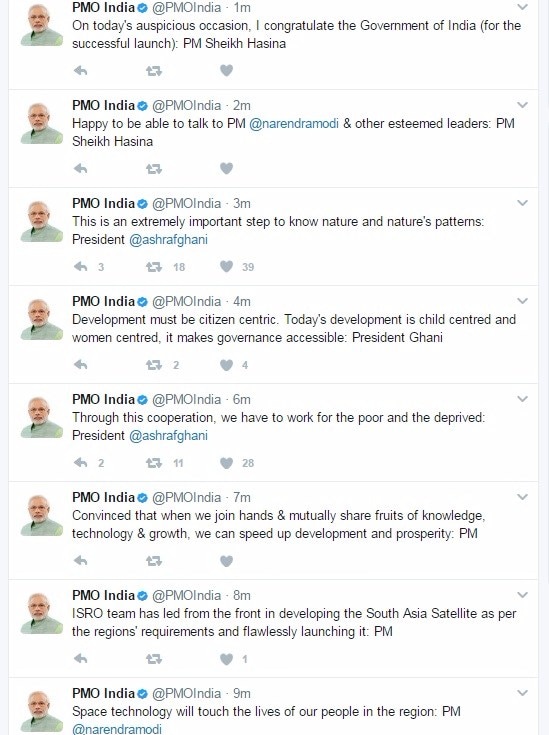
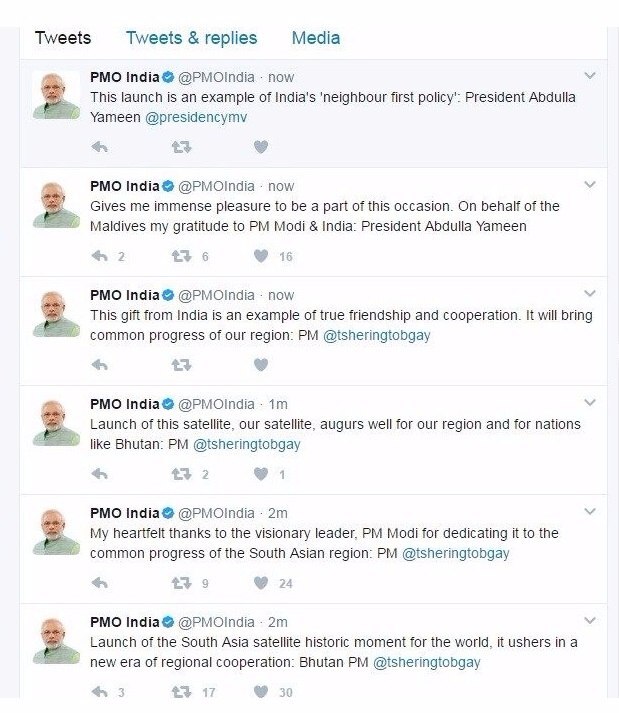 All you need to know about the historic launch of GSLV-F09
All you need to know about the historic launch of GSLV-F09


 PM Narendra Modi today congratulated the ISRO team for its historic launch of South Asia Satellite.
PM Narendra Modi today congratulated the ISRO team for its historic launch of South Asia Satellite. 

 All you need to know about the historic launch of GSLV-F09
All you need to know about the historic launch of GSLV-F09 - Ingenious Cryogenic engine has been used. ISRO built the 2,230-kg satellite, which uses a new propulsion system, over three years at a cost of Rs. 235 Crore. However the total cost of the project stands 450 Crore.
- The Rocket weighs 414 Kg.
- Life of this mission is 12 years.
- The satellite will provide telecommunication links between India, Nepal, Bhutan, Bangladesh, Maldives, Sri Lanka and Afghanistan.
- Pakistan opted out of the project, saying it has its "own space programme".
- Pakistan has five satellites but lacks heavy duty launchers and satellite fabrication facilities.
- The satellite will help the nations communicate better during disasters and it could help establish a hotline among them.
- The functions of the South Asia satellite will include telemedicine and education.
- The satellite has 12 Ku Band transponders -- devices that help in communication. Each nation will get access to at least one transponder.
- Each country can beam its own TV programs while there will be the possibility for a common South Asia programming.
- PM Modi had, after taking office in 2014, asked scientists at ISRO to develop a SAARC satellite as a gift dedicated to neighbouring countries.
Related Video
Punjab News: AAP Leader Shot Dead During Wedding in Amritsar
Follow Breaking News on ABP Live for more latest stories and trending topics. Watch breaking news and top headlines online on ABP News LIVE TV

Justin M Bharucha
Opinion




































